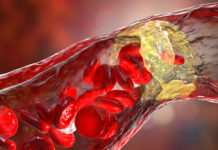 Daily fruit consumption cuts the risk of cardiovascular disease (CVD) by up to 40%, according to research presented at the European Society of Cardiology (ESC) Congress in Barcelona, Spain According to Dr Huaidong Du from Oxford, UK, the findings from his seven year follow-up study of nearly 500,000 people in the China Kadoorie Biobank found that the more fruit people ate, the more their risk of CVD declined.
Daily fruit consumption cuts the risk of cardiovascular disease (CVD) by up to 40%, according to research presented at the European Society of Cardiology (ESC) Congress in Barcelona, Spain According to Dr Huaidong Du from Oxford, UK, the findings from his seven year follow-up study of nearly 500,000 people in the China Kadoorie Biobank found that the more fruit people ate, the more their risk of CVD declined.
Dr Du said: “CVD, including ischemic heart disease (IHD) and stroke, is the leading cause of death worldwide. Improving diet and lifestyle is critical for CVD risk reduction in the general population but the large majority of this evidence has come from western countries and hardly any from China.”
She added: “China has a different pattern of CVD, with stroke as the main cause compared to western countries where IHD is more prevalent. Previous studies have combined ischemic and hemorrhagic stroke probably due to the limited number of stroke cases in their datasets. Given their different physiology and risk factors, we have conducted the first large prospective study on the association of fruit with subtypes of stroke in Chinese adults from both rural and urban areas.”
The current study included 451,681 participants with no history of CVD and not taking anti-hypertensive drugs at baseline from the China Kadoorie Biobank(1) conducted in 10 different areas of China, 5 rural and 5 urban. Habitual consumption of fruit was recorded at baseline according to five categories: never, monthly, 1-3 days per week, 4-6 days per week, daily.
Over the seven year follow up period there were 19,300 cases of heart disease and 19,689 strokes (14,688 ischemic and 3,562 hemorrhagic). Some 18% of participants consumed fruit daily and 6.3% never consumed fruit. The average amount of fruit eaten by the daily consumers was 1.5 portions (~150g) (2).
The researchers found that compared to people who never ate fruit, those who ate fruit daily cut their CVD risks by 25-40% (around 15% for ischemic heart disease, around 25% for ischemic stroke and 40% for hemorrhagic stroke). There was a dose response relationship between the frequency of fruit consumption and the risk of CVD.
Dr Du said: “Our data clearly shows that eating fresh fruit can reduce the risk of cardiovascular disease, including ischemic heart disease and stroke (particularly hemorrhagic stroke). And not only that, the more fruit you eat the more your CVD risk goes down. It does suggest that eating more fruit is beneficial compared to less or no fruit.”
The researchers also found that people who consumed fruit more often had significantly lower blood pressure (BP). Eating fruit daily was associated with 3.4/4.1 mmHg lower systolic/diastolic BP compared to those who never ate fruit. Dr Du said: “Our data shows that eating fresh fruit was associated with lower baseline BP. We also found that the beneficial effect of fruit on the risk of CVD was independent of its impact on baseline BP.”
In a separate analysis, the researchers examined the association of fruit consumption with total mortality and CV mortality in more than 61,000 patients from the China Kadoorie Biobank who had CVD or hypertension at baseline. They found that compared to those who never ate fruit, daily consumers of fruit cut their overall risk of death by 32%. They also reduced their risks of dying from IHD by 27% and from stroke by around 40%.
Professor Zhengming Chen, the principal investigator of the China Kadoorie Biobank, said: “Patients with CVD and hypertension should also be encouraged to consume more fresh fruit. Many western populations have experienced a rapid decrease in CVD mortality during the past several decades, especially stroke mortality since the early 1950s, for reasons that are not yet fully explained. Improved access to fresh fruit may well have contributed importantly to that decline.”
The researchers concluded: “Our results show the benefit of eating fruit in the healthy general population and in patients with cardiovascular disease and hypertension. Fruit consumption is an effective way to cut cardiovascular disease risk and should not only be regarded as ‘might be useful’. Policies are needed to promote the availability, affordability and acceptability of fresh fruit through educational and regulatory measures.”
References:
(1) The China Kadoorie Biobank is a prospective cohort study established jointly by the University of Oxford’s Clinical Trial Service Unit and Epidemiological Studies Unit and the Chinese Academy of Medical Sciences. The baseline survey took place during 2004 and 2008 involving 0.5 million people in 10 regions across China including 5 urban and 5 rural. For more information visit here. http://www.ckbiobank.org/
(2) The China Kadoorie Biobank conducts a resurvey every 4 or 5 years among about 5% of randomly selected participants who are still alive. A resurvey is ongoing and will be completed by the end of August/beginning of September. Initial data show that the average amount of fruit eaten by the daily consumption group is 1.5 portions (150g).














